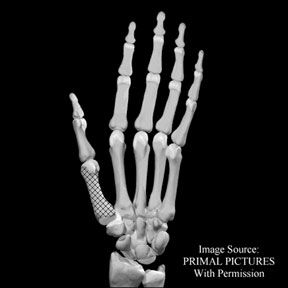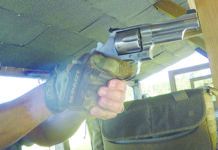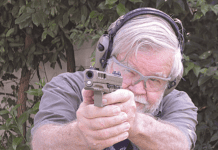Inventory Lists
I am confused. I received my May 2008 issue of Gun Tests on April 29. On the back cover of that issue, it states: “Gun Tests sells some of its test guns to readers. To receive the current test-product inventory lists, email a request to:
The next morning I did as requested and emailed my request. The notice on the back cover leads you to believe that there is a current inventory list? You are indicating that there isn’t and that you don’t know when there will be?
My question is, why would you run an ad instructing your readers to request something that apparently doesn’t exist in a current form, and you don’t know when it will? Am I making any sense? Please advise.
Tim Oliver
In the eight or so years we’ve notified Gun Tests readers of inventory guns for sale, yours is the first inquiry that didn’t understand that the list’s distribution is intermittent, and as our inventory allows. However, I’ve adjusted the language on the back page to ensure that the terms of distribution are clearer. To answer your questions here, the product coordination editors are independent FFLs who buy and sell guns, and they ensure our gun-supply control is to the letter of the law. As such, they occasionally have test guns to sell, and when possible, we let readers know about these test guns for sale. It’s been several months since we’ve distributed a list, simply because the product-coordination editors have already sold them. Alas, because of white-lists for email, ongoing problems with AOL, and other technical problems, we’re exploring ways to phase out the e-mail list and notify readers of any test-gun inventory in other ways.
—Todd Woodard
The Best Compliment, Nearly, Ever!
Great publication! I look forward to each copy. Gun Tests is better than sex! Well, actually not, but close. Could you please include my address to those receiving the test-product inventory list. Thank you, and keep up the good work!
Curtis Rodgers
Westminster, MD
Yes, Curtis, we’ll add you to the list. —tw
Electronic Hearing Protection
Would it be possible to run a comparison on electronic hearing protection? I bought a cheapo outfit, and it doesn’t give me binaural sound, although it does cut the noise.
Peter Whitney
Check the October 2002 back issue on Gun-Tests.com, “Electronic Ear Muffs: Peltor Leads The Pack in Hearing Protection.” —tw
Re “Two Speedy .30-Caliber Rifles:
Tikka’s T3 Lite .300 WSM Wins,” March 2008
In this issue, the Tikka T3 rifle in .300 WSM was rated A+. Can it be assumed that this same rifle in .300 Win. Mag. would also have an A+ rating?
Derwin Kim
As we explain to Mr. Kirschner later, we can only recommend the guns we test. We can’t offer an opinion on the Tikka in 300 Win. Mag. —tw
Re “380 ACP Pistols: Ruger’s New LCP Wins Against PPK, Taurus,” June 2008
I read with great interest your review of three .380 caliber pistols,

288
in particular your critique of the Walther PPK. In the May 2008 issue, you positively gushed over the Walther PPK 32 ACP. After reading your May 2008 issue I ran (not walked) to my local gun store and bought a Walther PPK/S chambered in .380 instead of the 32 ACP because I wanted more power in a concealable. My brother has the 32 ACP PPK/S model. Everything we both read was that the 32 and 380 were “virtually indistinguishable” except for the caliber.
Imagine my surprise when the June 2008 issue was far less complimentary about the 380 than the 32 despite their being nearly physically identical. True, my right hand-thumb metacarpal ached (see photo at right) from the recoil as you describe in the June 2008 review. I also had to adjust my typical 45 ACP “Ayoob” grip by lowering my hand and hooking my pinky finger under the thumbrest on the magazine to avoid two things: (1) my right thumb interfering with the decocker; (2) “biting” me between the thumb and forefinger.
On the other hand (no pun intended), I find this classic pistol to be as accurate as you describe and have already pumped over 500 rounds through it using three different Walther original magazines (note to users: break in the magazines, they tend to “double feed” when new). I appreciate the craftsmanship and fit/finish probably more than your testers do. I am aware of the serrations on the decocker, but mine aren’t nearly as abrasive as the ones you describe on the PPK.
What I am not sure about is how different the PPK and PPK/S are in terms of finish and recoil. Save for there being an additional round and extended grip/backstrap, I cannot imagine why the folks in Houlton, Maine, would intentionally make the 380 less comfortable than the 32 version in either PPK or PPK/S. So it’s down to the energy produced by the 380 round. Is it so much more powerful than the 32 that my bones would ache?
Seeing how you compared the Ruger LCP to the Kel-Tec P3AT in the same June 2008 issue, I cynically wonder if your review didn’t unnecessarily diminish both the Walther PPK and Taurus PT138BP-12 in favor of the LCP. I know the latter might be true since your review itself wanted to rate the Taurus higher. Thanks for listening.
Corey A. Kirschner, PMP, FACHE, FRSH
Scott AFB, Illinois
We warn readers all the time not to extrapolate data from one gun to another. A quick look at the Gun-Tests.com archive would have shown that previous Walther 380 tests caused some of the problems you encountered. By the way, thanks for the picture. —tw
I was disappointed in your recent test of .380 pistols in the June 2008 issue. Including a prehistoric clunk like the PPK against the newer offerings from Ruger, Taurus, and Kel-Tec is like testing the Browning A-5 against the latest semi-auto offerings from Benelli and Remington. Going head to head with today’s state of the art against the best that the 1920s and 1930s had to offer seems kinda lame. Looked like a stacked deck to me.
Norm Fishler
Roswell, NM
Re ” Special Report Two Tiny 380S: LCP Vs. Kel-Tec,” June 2008
I think the Seecamp LWS 380 is the most reliable concealment handgun available, even though it is hard to find and costs almost three times as much as a Kel-Tec P-3AT. Would like to see Gun Tests evaluate the Seecamp using ammo recommended by LWS.
Steve Callas
Rochester, Minnesota
I loved your recent article on small .380 handguns. I particularly enjoyed and found useful the comparison of the Kel-Tec P3AT and the Ruger LCP. I am hoping, though, that in looking at .380 handguns that you would test the Sig Sauer P232. While it’s not as small as the Kel-Tec or Ruger LCP, it seemed comparable to the Walther PPK, and I do not think you have tested the P232. I have one, and I have found it a nice little gun. That being said, I would love to see what you think of it and how it stacks against other .380s. I love your magazine and find it a welcome source of honest, non-commercialized gun news.
Paul McDermott
Manitou Springs, CO
In the next week or two, I’m going to buy one of these two pocket pistols. In the June 2008 issue, you have two reports on the LCP and one on the P3AT. Each report has a different winner. In the “Special Report,” it sounds like you are saying that the Kel-Tec is the better gun. Is that correct? Thanks for Gun Tests.
Bill Johnson,
Michigan
Yes, we’d recommend the Kel-Tec over the LCP. Sorry that wasn’t clearer in the Special Report. Ray Ordorica has written an extensive follow-up on GunReports.com, which we’ll also recap next issue. —tw
A Firing Line Special Report
TAKING ANOTHER LOOK AT THE FN SLP TACTICAL SHOTGUN
The prominent military arms maker objected to the F Grade we gave the Self-Loading Police Model. The company made an interesting argument, so out of fairness we went back to the range.
The February issue of Gun Tests contained a three-gun matchup of synthetic-stock tactical police shotguns from Remington, HK Fabarm and FN Herstal USA. Our range sessions concluded that the out-of-the-box shootability of the Remington 11-87 Police 12 Gauge 3-Inch earned a well-deserved A grade, while the since-discontinued HK Fabarms only garnered a C due to a less-than-ideal loading sequence. We encountered cycling problems with the FN Self-Loading Police, experiencing extraction problems and other failures to eject in a disconcerting number of rounds across several lots of ammunition. Failures to function to this extent during a Gun Tests’ range session automatically mean an F.
We soon received distress calls from FN after our report began to circulate, so we undertook a fact-finding mission that has resulted in an elevation of the FN SLP in our estimation—but not without substantially more range work and a trip to the gunsmith. The result: We can now safely assert that the FN SLP will operate reliably with most types of ammunition—voiding the F Grade we give to guns that experience extensive range failures. But we nonetheless have a difference of opinion with FN regarding the SLP design, which in our view keeps the gun out of the top grade. These reservations focus on philosophy more than operations—areas of subjectivity that ultimately fall to user discretion. We enjoyed a fruitful dialog with FN National Sales Manager Ken Flood, who enlightened us on his company’s point of view.
Why The FN is Different
The $875 FN SLP is priced comparably to our A-rated Remington, which retails at $850. However, the FN allows the shooter to tailor shot shell load and recoil through the use of two interchangeable gas pistons—a light or “normal” piston for lighter shot loads, and a heavy piston for heavier loads. Flood told us the ability to change out the gas piston means the FN can be tailored to meet the needs of different shooters under different circumstances—either for competition, police work, even turkey hunting.
Gun Tests testers—which include police officers whose duties include breaching doorways and serving warrants—believe that the option of changing out pistons introduces an unwanted variable during situations that could rapidly deteriorate. Who wants to think about which piston is installed and which ammunition might be suitable for a given tactical situation when events become dynamic? Flood suggests that most police officers who are preparing for an operation would likely use the FN’s heavy piston and a full-power slug or buckshot load—relying on the characteristics of the piston to deal with any excessive recoil. Indeed, Flood contends that Gun Tests cycling problems with the FN really came down to our choice of ammunition.
“Any kind of Remington or Federal reduced-recoil buckshot probably won’t cycle this gun,” Flood says. “Instead, for police work, we’d recommend a Winchester Ranger LE brand in 2 3/4-in. max dram equivalent with a 1 1/8-oz. load. It’s just a fact that lighter loads are meant for pump guns. They aren’t going to cycle a semi-auto as well.”
Further, Flood says, it’s up to police departments to determine what will reliably shoot through the firearms their officers use, and to equip their officers accordingly. It’s unlikely police will enter any kind of tactical scenario guessing about which piston to install or which ammunition will work; Gun Tests’ arguments to the contrary lack real-world validity, Flood says.
Later examination revealed that Gun Tests’ evaluation of the FN was hampered by the fact that our test SLP shipped with the heavier piston, while the SLP owner’s manual showed that the gun should ship with the lighter piston. That means that the lighter shot loads initially tested in the FN with the heavy piston installed had a greater likelihood of ejection failure. Had the lighter piston been installed in our test gun as the manual indicated, then it’s likely we would not have experienced as many cycling problems.
When we pointed out this discrepancy between the owner’s manual and the piston that came installed in our test gun, FN told us their manual was incorrect, and that the gun should ship with the heavier piston (the manual is now undergoing revision). Flood indicated the gun needs to ship with the heavy piston for safety reasons in case a new owner chooses to immediately put a higher power load through the gun right out of the box.
The FN’s Design Scope
Flood also argues that, regardless of the word “Police” in the gun’s model name, the SLP is really intended for use beyond law enforcement. Testing the gun only in a law enforcement context precludes larger market segments where the SLP shines, Flood says. For instance, Flood says, the SLP, based on the Winchester Super X3, is particularly well suited for 3-Gun Competition, where the SLP’s ultra-fast cycling times offer unique advantages.
“It’s the fastest cycling shotgun in the world,” he asserts. “The Winchester Super X3 holds the record of 12 rounds in 1.4 seconds; the SLP is the same gun with the same internals.” Flood points out that Daniel Horner of the Army Marksmanship Team has fired 15,000 rounds through his SLP, and the gun is still going strong. Flood also believes the SLP is utilized more for home defense or stowage in a vehicle trunk rather than tactical police work.
“The market for this gun also includes recreational, competition or home defense. While we think it’s a great tactical police gun, testing it only as a police shotgun isn’t really accurate,” Flood says.
What We Learned During Our Review
Alerted to potential anomalies, we tasked testers with more range time to see if we could pinpoint problems with the SLP. That’s

288
when we discovered the Normal piston was still in the original packaging and the heavy piston was installed—contrary to the information in the owner’s manual but now verified as correct by the factory. During this range session we found four out of ten ammunition types shot without incident using the heavy piston: The 1.5-oz. Remington Nitro Magnum #4 Shot; the 1.75-oz. Fiocchi Golden Pheasant #5 Shot; the 2.0-oz. Winchester Double X Mag Turkey #5 Shot; and the 1.25-oz. PMC Steel Shot #3 shot.
We had a variety of failures to eject using the heavy piston while firing a 1.25-oz. PMC Steel Shot BBB; 1-oz. Remington Law Enforcement Reduced Recoil Slug; 1-oz. Remington Law Enforcement Reduced Recoil OO Bk; Sellier & Bellot OO Bk; 1.2-oz. Federal Target LAPD #7.5 and 1.2-oz. Winchester Super Target #8s.
Swapping out the pistons, we learned that seven ammunition types fired without a problem using the light piston: The 1.5-oz. Remington Nitro Magnum #4 Shot; the 1.75-oz. Fiocchi Golden Pheasant #5 Shot; the 2.0-oz. Winchester Double X Mag Turkey #5 Shot; the 1.25-oz. PMC Steel Shot BBB; the 1.25-oz. PMC Steel Shot #3; the Remington Law Enforcement Reduced Recoil OO Bk; and the Sellier & Bellot Buck Shot OO Buckshot.
Using the light piston we had ejection problems with the 1-oz. Remington Law Enforcement Reduced Recoil Slug; the 1.2-oz Federal Target LAPD #7 1/2; and the 1.2-oz. Winchester Super Target #8.
“I would argue that your testers evaluated this gun as a law-enforcement tool using ammunition that would never realistically be shot through it by law enforcement,” Flood contends.
At minimum, he says, the SLP needs a 2 3/4-in. shell with a 3-dram equivalent powder charge with better than 1 1/8 oz. of 7 1/2 or 8-shot. “Anything less than 1 1/8 ounce is pretty light for a semi-automatic shotgun,” Flood says. “And anything designated ‘reduced recoil’ is really only suitable for a pump gun.”
We then sent the gun out for an independent gunsmithing session, limited to stripping, cleaning and additional firing to further break it in. We shot without incident Remington 2.75-in. OO Bk, Winchester 3-in. OO Bk and Vinci 2.75-in. max dram 1-oz. target loads using the light piston. Our gunsmith asserted the firearm was ready for personal protection or tactical use.
Conclusion
We normally give ‘A’ grades to guns that can swallow any type of ammunition we feed it—which was clearly the case with the Remington 11-87. The FN SLP’s appetite was, by comparison, more choosy—a negative offset by the FN’s rapid cycle times when the right ammunition is used. Still, we have to downgrade the SLP due to the fact that it ships the gun with a piston that the manual says it’s not supposed to ship with—which probably led to our initial failures to eject using lighter loads recoiling against the heavier piston.
Putting tactical issues aside, we’re moved by FN’s argument that the ultra-fast cycling SLP is ideally suited to competition—and that Army competition shooters have found the SLP to perform at high levels. Because we went to unusual lengths to re-visit the SLP’s strengths and weaknesses during additional range time and on the gunsmith’s bench, we also believe the gun is more reliable than our initial judgment suggested.
For all those reasons, we’re moving the SLP’s grade from an F to a B. If readers have additional opinions, the “Firing Line” is open. GT























